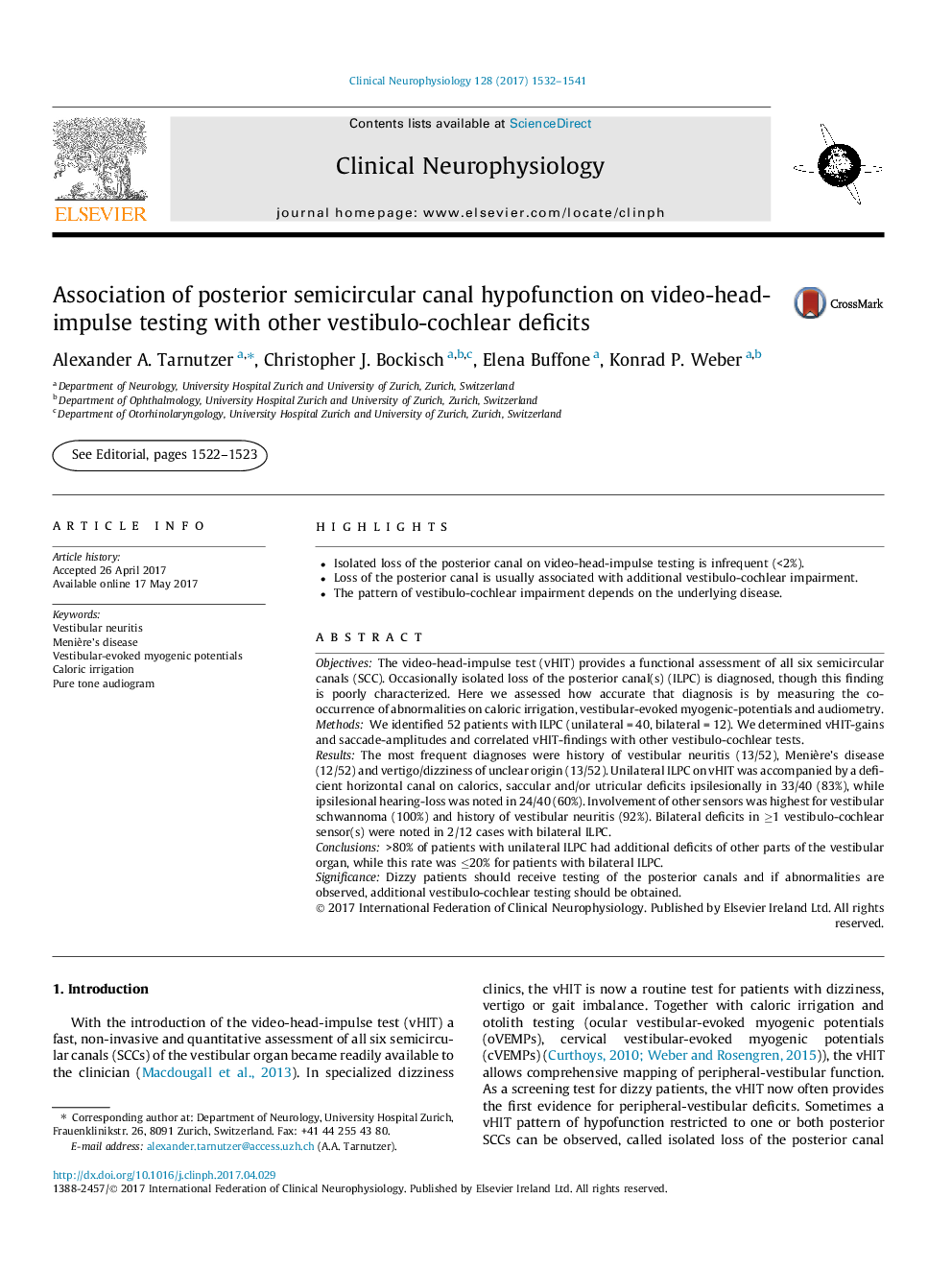| Article ID | Journal | Published Year | Pages | File Type |
|---|---|---|---|---|
| 5627620 | Clinical Neurophysiology | 2017 | 10 Pages |
â¢Isolated loss of the posterior canal on video-head-impulse testing is infrequent (<2%).â¢Loss of the posterior canal is usually associated with additional vestibulo-cochlear impairment.â¢The pattern of vestibulo-cochlear impairment depends on the underlying disease.
ObjectivesThe video-head-impulse test (vHIT) provides a functional assessment of all six semicircular canals (SCC). Occasionally isolated loss of the posterior canal(s) (ILPC) is diagnosed, though this finding is poorly characterized. Here we assessed how accurate that diagnosis is by measuring the co-occurrence of abnormalities on caloric irrigation, vestibular-evoked myogenic-potentials and audiometry.MethodsWe identified 52 patients with ILPC (unilateral = 40, bilateral = 12). We determined vHIT-gains and saccade-amplitudes and correlated vHIT-findings with other vestibulo-cochlear tests.ResultsThe most frequent diagnoses were history of vestibular neuritis (13/52), Menière's disease (12/52) and vertigo/dizziness of unclear origin (13/52). Unilateral ILPC on vHIT was accompanied by a deficient horizontal canal on calorics, saccular and/or utricular deficits ipsilesionally in 33/40 (83%), while ipsilesional hearing-loss was noted in 24/40 (60%). Involvement of other sensors was highest for vestibular schwannoma (100%) and history of vestibular neuritis (92%). Bilateral deficits in â¥1 vestibulo-cochlear sensor(s) were noted in 2/12 cases with bilateral ILPC.Conclusions>80% of patients with unilateral ILPC had additional deficits of other parts of the vestibular organ, while this rate was â¤20% for patients with bilateral ILPC.SignificanceDizzy patients should receive testing of the posterior canals and if abnormalities are observed, additional vestibulo-cochlear testing should be obtained.
